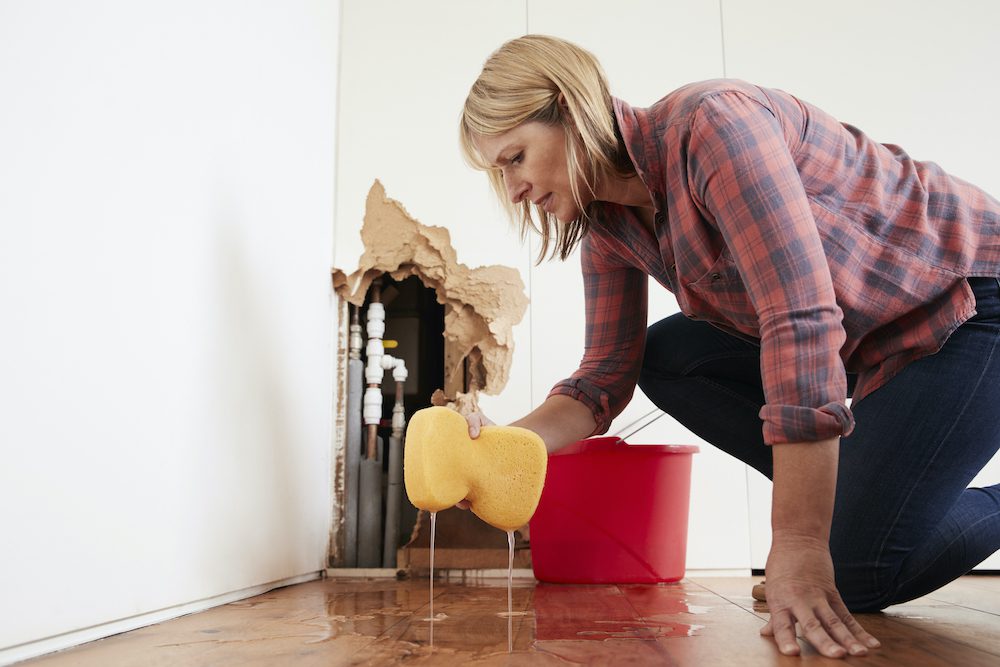Spot Sneaky Water Line Leaks: 6 Smart Detection Tricks
Spot Sneaky Water Line Leaks: 6 Smart Detection Tricks
Blog Article
In this article in the next paragraph you'll find a good deal of outstanding resources in regards to Hacks to detect leaks.

Early detection of dripping water lines can reduce a possible catastrophe. In addition to saving you cash, it will certainly lessen the worry as well as disappointment. The moment you locate a leak, calling your plumber for repairs is the most effective service. Some tiny water leakages may not be noticeable. Right here are some hacks that aid if you can not spot it with your naked eyes.
1. Take A Look At the Water Meter
Every home has a water meter. Checking it is a proven way that helps you uncover leaks. For starters, switch off all the water sources. Make sure no one will flush, use the faucet, shower, run the cleaning machine or dish washer. From there, go to the meter and also watch if it will alter. Since nobody is utilizing it, there must be no activities. That suggests a fast-moving leakage if it relocates. If you find no adjustments, wait an hour or two and also examine back once more. This means you might have a slow-moving leak that could even be underground.
2. Inspect Water Intake
Analyze your water costs and track your water consumption. As the one paying it, you should observe if there are any discrepancies. If you identify sudden changes, despite your consumption being the same, it implies that you have leaks in your plumbing system. Remember, your water expense should drop under the same array each month. An abrupt spike in your bill suggests a fast-moving leakage.
Meanwhile, a stable boost each month, despite the same behaviors, shows you have a slow leakage that's also slowly escalating. Call a plumber to completely examine your residential or commercial property, specifically if you feel a cozy area on your floor with piping below.
3. Do a Food Coloring Examination
When it comes to water intake, 30% comes from bathrooms. If the shade somehow infiltrates your bowl throughout that time without flushing, there's a leak in between the storage tank and bowl.
4. Asses Outside Lines
Don't neglect to check your outside water lines also. Examination faucets by affixing a yard hose pipe. Needs to water leak out of the link, you have a loose rubber gasket. Replace this and make sure all connections are limited. If you have actually obtained an automatic sprinkler, it will certainly assist get it professionally analyzed and also maintained each year. One small leak can waste tons of water and increase your water costs.
5. Check as well as Assess the Situation
Home owners ought to make it a routine to examine under the sink counters as well as also inside cabinets for any type of bad odor or mold and mildew development. These 2 red flags show a leakage so punctual focus is called for. Doing regular inspections, also bi-annually, can conserve you from a significant trouble.
Check for stainings and weakening as many appliances as well as pipes have a life expectations. If you suspect dripping water lines in your plumbing system, don't wait for it to escalate.
Early discovery of dripping water lines can minimize a prospective disaster. Some little water leakages might not be visible. Examining it is a proven way that assists you find leakages. One tiny leakage can waste heaps of water and spike your water bill.
If you think leaking water lines in your plumbing system, do not wait for it to intensify.
WARNING SIGNS OF WATER LEAKAGE BEHIND THE WALL
PERSISTENT MUSTY ODORS
As water slowly drips from a leaky pipe inside the wall, flooring and sheetrock stay damp and develop an odor similar to wet cardboard. It generates a musty smell that can help you find hidden leaks.
MOLD IN UNUSUAL AREAS
Mold usually grows in wet areas like kitchens, baths and laundry rooms. If you spot the stuff on walls or baseboards in other rooms of the house, it’s a good indicator of undetected water leaks.
STAINS THAT GROW
When mold thrives around a leaky pipe, it sometimes takes hold on the inside surface of the affected wall. A growing stain on otherwise clean sheetrock is often your sign of a hidden plumbing problem.
PEELING OR BUBBLING WALLPAPER / PAINT
This clue is easy to miss in rooms that don’t get much use. When you see wallpaper separating along seams or paint bubbling or flaking off the wall, blame sheetrock that stays wet because of an undetected leak.
BUCKLED CEILINGS AND STAINED FLOORS
If ceilings or floors in bathrooms, kitchens or laundry areas develop structural problems, don’t rule out constant damp inside the walls. Wet sheetrock can affect adjacent framing, flooring and ceilings.
https://www.servicemasterbyzaba.com/blog/how-to-detect-water-leakage-in-walls/

I ran across that article on Locating water leaks while perusing the web. Sharing is caring. You just don't know, you may very well be helping someone out. We appreciate reading our article about Locating water leaks.
Schedule A Free Estimate Report this page